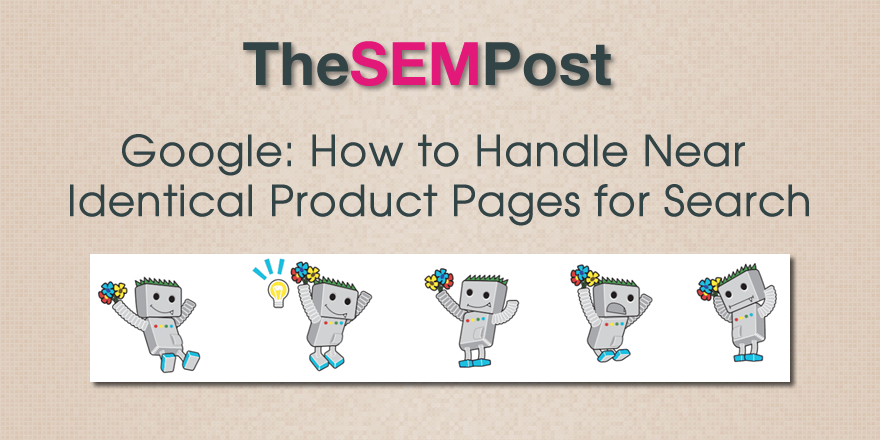 It is always one of those challenging decisions for site owners – what to do about products that are so similar that when you try and index them individually, they are often flagged as duplicate content because there are only minor differences, such as the size or the color.
It is always one of those challenging decisions for site owners – what to do about products that are so similar that when you try and index them individually, they are often flagged as duplicate content because there are only minor differences, such as the size or the color.
The question came up in a Google Webmaster Office Hours but it is a question that comes up from ecommerce site owners all the time, how to handle these nearly identical content.
The question was about these very similar products – what the site owner had done was choose a main one as canonical, and set the others as the canonical to the main one. When you set it up this way, it is usually only the main one that is indexed, although sometimes Google will show the non-canonical for very specific searches.
So that is definitely the case if you use a canonical tag, then we will combine those pages and just index one of those versions.
So one thing you can do is make sure that the main page that is chosen for the canonical from your point of view actually has a listing of all of the different variants as well. So that’s something you may need to double check how you have your page set up and maybe tweak it a bit so that all the variants are listed as well.
Of course, some will put in more time and effort to these pages and make sure that each variant page is unique content, so they aren’t similar enough that Google will filter them for being duplicate. The drawback to this method is that someone might land on one of these variants that is not exactly what they are looking for, and if the site owner doesn’t also include links to these variants, the searcher can end up hitting the back button and going to a competitor’s site instead.
Regardless of how you decide to set it up, really think about the strategy from the user perspective and not just Google. Some make the mistake of thinking “more pages are better” when it some situations, less is more.
You can also look and see how competitors are dealing with the same situation, then see if their visitors are served better by the all in one strategy or an individual page strategy. And the type of product will also make a huge difference in how you might decide as well. For example, if you are selling a #10 screw, it makes much more sense to offer the various length options on that single page, rather than making individual pages for 1/8″ length variants. The same goes for clothing – you might offer the same t-shirt in mens and womens, but in this case, it makes more sense for splitting mens and womens into individual pages rather than one.